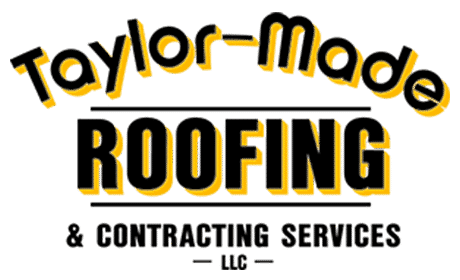Downspouts play an important role in guttering systems, safely transporting rainwater from the gutters to a suitable spot on the ground. They direct water away from your property’s foundation, preventing water damage, erosion, destruction of landscaping, and other harmful repercussions of uncontrolled drainage. If you’re looking to purchase, replace, or maintain downspouts, contact the guttering experts at Taylor-Made Roofing for help.
Installing Downspouts
Our team will take several factors into account (including the size and shape of your roof, the weather, and the design of the gutters) to determine where to place downspouts within your gutter system.
Most downspouts have the following characteristics:
- Fully enclosed, extending from the gutter to the ground
- Attached to the house or commercial property with downspout brackets
- Stationed at low points in the gutters, so that water easily drains into them
- Fabricated from the same material as the gutters
- Feature a cage (a wire strainer) at the top to trap debris while allowing water to flow through
- Contain an elbow if the downspout needs to curve in a different direction
- Curve outward at the bottom, directing water away from the property’s foundation
Splash Blocks and Underground Drainage Systems
To prevent soil erosion and splashing mud, splash blocks are sometimes installed beneath downspouts. These simple, rectangular devices usually have a close-ended side (which sits beneath the downspout) and an open-ended side (which guides water away from the property). Splash blocks are typically made of plastic or concrete.
An alternative to a splash block is an underground drainage system, which inconspicuously carries rainwater away from the property. In these systems, the downspout connects to a drainpipe that transports the water beneath the ground.
Diagnosing and Fixing a Clogged Downspout
Like gutters, downspouts clog easily when leaves, twigs, and other debris accumulates. Most homeowners know that it’s important to clean their gutters periodically, but they forget to clean their downspouts.
Rainwater cannot drain properly through a clogged downspout, so it’s important that clogs are removed promptly. Unfortunately, downspout clogs cannot easily be seen. If you notice any of the following symptoms, your downspout may be clogged:
- Water is not flowing out of your downspout during a downpour.
- During a storm, water flows out from the edges of the gutter.
- The soil beneath the gutter has eroded.
- The gutters are pulling away from the fascia because they’re carrying excessive weight.
- You notice peeling paint, dirt, or moisture on your property’s exterior walls.
To determine if your downspout has a clog, first check to see if the cage at the top of the downspout is clogged, bent, or out of place. If the cage isn’t the culprit, try placing a garden hose inside the downspout and turning it on. If water begins backing up, there is a clog.
To locate the clog, try tapping a screwdriver down the length of the downspout, starting at the top and working your way down. Listen for a dull thud, as opposed to a hollow ring. This will tell you where the clog is located.
If your downspout is clogged, schedule a professional cleaning to have the clog removed. You could also try removing the clog yourself by (1) cleaning out the cage at the top of the downspout; (2) cleaning out debris yourself by hand; or (3) using a plumbing snake, stick, pressure washer, or hose to free the obstruction.
Maintaining Downspouts
When you schedule periodic cleanings and inspections of your gutters, request that the guttering team also checks your downspouts and removes any clogs. And to prevent clogs in the future, considering having gutter guards installed. By preventing debris from entering your gutter system, gutter guards reduce the likelihood of clogs.
